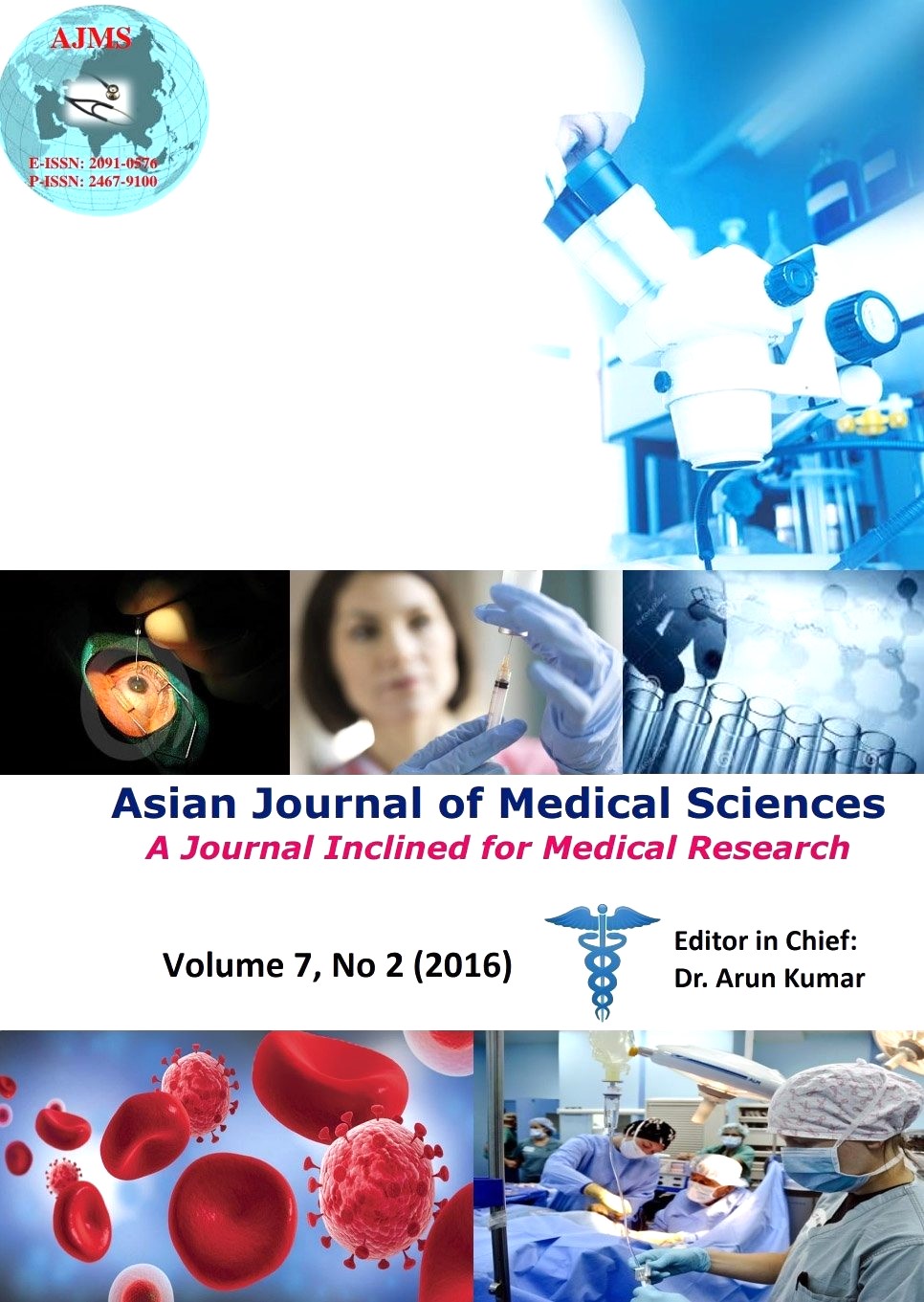Outcome of Type 1 tympanoplasty: An experience at Biratnagar eye hospital in Eastern Nepal
Keywords:
Tympanoplasty, otitis media, hearing lossAbstract
Background: The history of tympanoplasty is well over a century. Type 1 tympanoplasty is an established procedure worldwide with a variation in the outcome.
Aims and Objectives: To analyze the outcome of Type 1 tympanoplasty surgeries in terms of graft success and hearing improvement done at the Ear Department of Biratnagar eye hospital in eastern Nepal and discuss the various factors that might have influenced it.
Materials and Methods: Retrospective analysis of records of the cases that underwent Type 1 tympanoplasty from August 2013 to January 2015 was done. The factors analysed were age, gender, the side of the affected ear and the perforation size. Appropriate Statistical test was applied and the results were discussed.
Results: A total of 151 cases of type 1 Tympanoplasty were analysed were females had higher frequency than males, with higher incidence at younger age. The mean age of successful cases was 28.53. Females had a better success rate in terms of graft success compared to males. Moderate size perforations had the best outcome of graft success and least were of small size perforations. Of all cases analyzed, hearing improvement was observed in maximum cases.
Conclusion: There was no significant influence of age or gender on the hearing outcome. The difference of hearing improvement according to size of perforation was also not significant.
Asian Journal of Medical Sciences Vol.7(2) 2015 55-60
Downloads
Downloads
Published
How to Cite
Issue
Section
License
Authors who publish with this journal agree to the following terms:
- The journal holds copyright and publishes the work under a Creative Commons CC-BY-NC license that permits use, distribution and reprduction in any medium, provided the original work is properly cited and is not used for commercial purposes. The journal should be recognised as the original publisher of this work.
- Authors are able to enter into separate, additional contractual arrangements for the non-exclusive distribution of the journal's published version of the work (e.g., post it to an institutional repository or publish it in a book), with an acknowledgement of its initial publication in this journal.
- Authors are permitted and encouraged to post their work online (e.g., in institutional repositories or on their website) prior to and during the submission process, as it can lead to productive exchanges, as well as earlier and greater citation of published work (See The Effect of Open Access).




